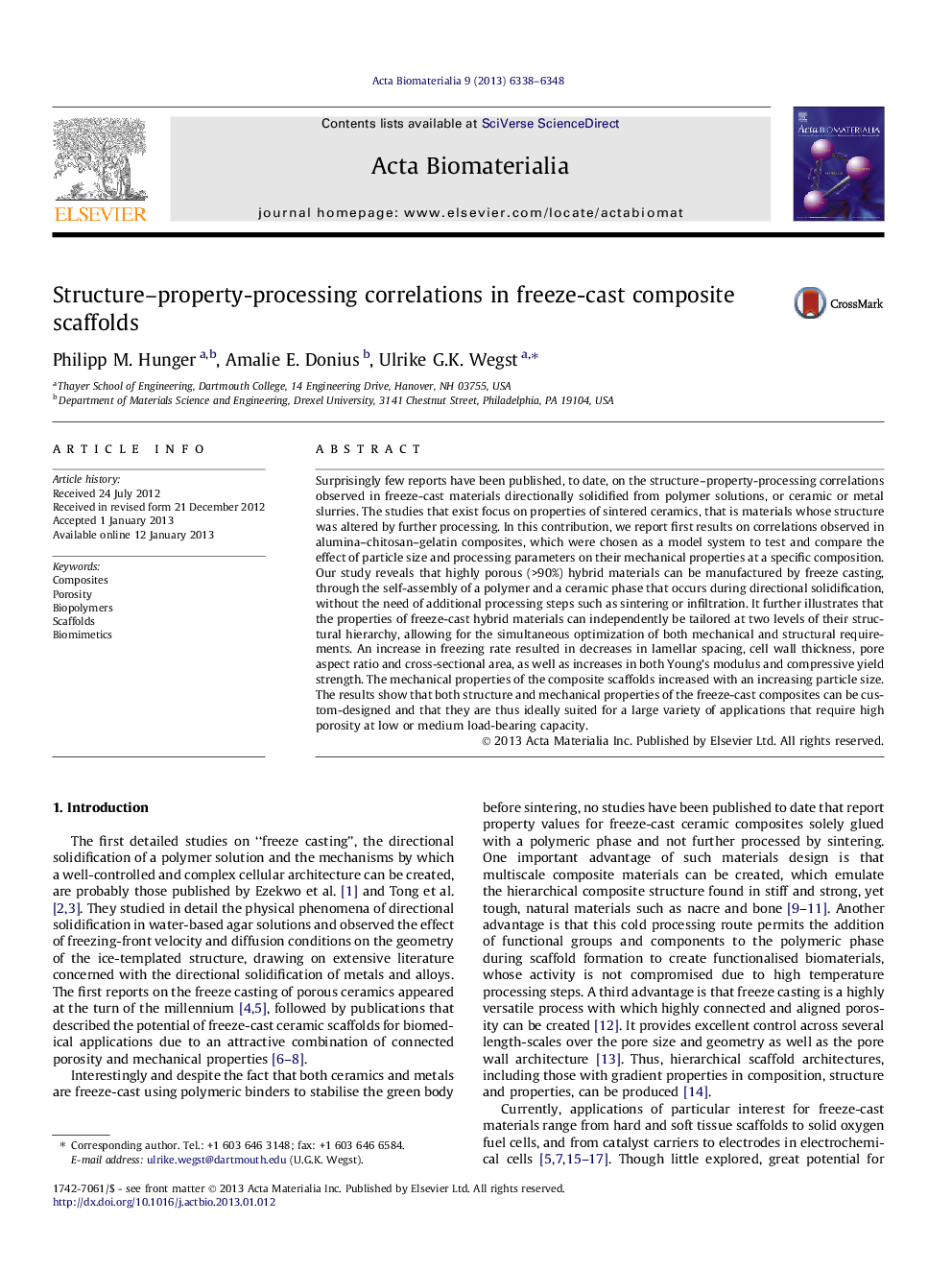| Article ID | Journal | Published Year | Pages | File Type |
|---|---|---|---|---|
| 10159891 | Acta Biomaterialia | 2013 | 11 Pages |
Abstract
Surprisingly few reports have been published, to date, on the structure-property-processing correlations observed in freeze-cast materials directionally solidified from polymer solutions, or ceramic or metal slurries. The studies that exist focus on properties of sintered ceramics, that is materials whose structure was altered by further processing. In this contribution, we report first results on correlations observed in alumina-chitosan-gelatin composites, which were chosen as a model system to test and compare the effect of particle size and processing parameters on their mechanical properties at a specific composition. Our study reveals that highly porous (>90%) hybrid materials can be manufactured by freeze casting, through the self-assembly of a polymer and a ceramic phase that occurs during directional solidification, without the need of additional processing steps such as sintering or infiltration. It further illustrates that the properties of freeze-cast hybrid materials can independently be tailored at two levels of their structural hierarchy, allowing for the simultaneous optimization of both mechanical and structural requirements. An increase in freezing rate resulted in decreases in lamellar spacing, cell wall thickness, pore aspect ratio and cross-sectional area, as well as increases in both Young's modulus and compressive yield strength. The mechanical properties of the composite scaffolds increased with an increasing particle size. The results show that both structure and mechanical properties of the freeze-cast composites can be custom-designed and that they are thus ideally suited for a large variety of applications that require high porosity at low or medium load-bearing capacity.
Related Topics
Physical Sciences and Engineering
Chemical Engineering
Bioengineering
Authors
Philipp M. Hunger, Amalie E. Donius, Ulrike G.K. Wegst,
